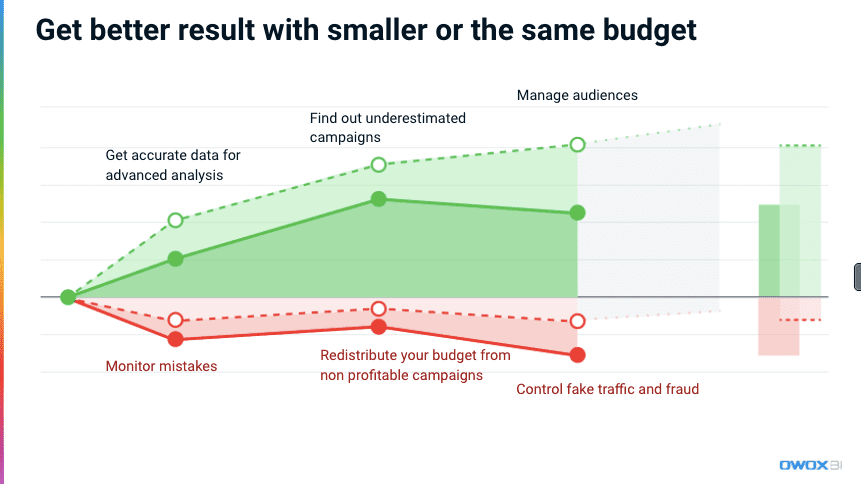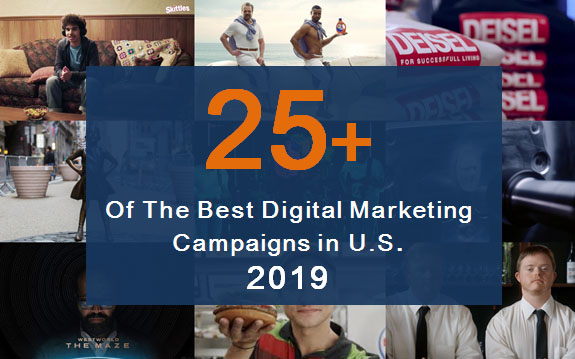10 Reasons to Implement Advanced Analytics in Your Marketing
Data-Driven Marketing | Sep 23, 2020
The year 2020 is a boxing ring in which business is in one corner and constant change is in the other. Now that more than half of the year has passed, how is your business holding on? Political, social, and even digital threats can make every potential risk materialize when you have just a few seconds to adapt and make the right decision. And to make the right decision, you need the right information. Advanced analytics is one way to get it.

Photo by fauxels from Pexels
What Is Advanced Analytics?
“Advanced Analytics is the autonomous or semi-autonomous examination of data or content using sophisticated techniques and tools, typically beyond those of traditional business intelligence (BI), to discover deeper insights, make predictions, or generate recommendations.” — Gartner Glossary
The significance of advanced analytics in adapting to the consequences of the present crisis can’t be overestimated. In response to the coronavirus pandemic, 19% of companies developed and activated anti-crisis plans according to an anonymous survey by Serpstat that was reported on by Search Engine Watch.
How did these companies manage to see opportunities where others saw disaster?
Mostly, by using available data to stay oriented during tumultuous times. They might have applied different approaches to staying profitable, but their main aim was the same — to make personalized offers that are tightly connected with customers’ needs and to make each point of customer interaction meaningful and useful for both customers and the company.
10 Benefits of Advanced Analytics in Marketing
1. Get Meaningful CAC and ROMI Calculations
All marketing starts with metrics. Advanced analytics shows metrics and their role in marketing from another perspective. It transforms metrics from being additional or even supporting elements of decision-making to being the main reason for doing or avoiding something.
When you calculate your CAC (customer acquisition cost) and ROMI (return on marketing investment) based on real ad cost data and generated profit, the correct attribution model, CRM data, and other data sources, you can rely on them as meaningful metrics.
To get your real CAC and ROMI, you should smooth out your ETL processes for collecting, merging, and storing data. You should also set up automatic checks of metric calculations to guarantee the quality of results and decrease the chance of errors. To do that, you may use OWOX BI Pipeline or another similar tool.
2. Accelerate Your Testing of Marketing Hypotheses
In a rapidly changing market situation, marketers have to make decisions fast and accurately. And to do that, they might have to test tens of hypotheses before launching huge ad budgets on big audiences. With advanced analytics, you don’t have to wait for a report from your analytics department about the results of your marketing experiments.
From planning to analyzing results, each step becomes faster and easier for marketers with advanced analytics. Aside from saving time, advanced analytics saves you from wasting your budget on inefficient campaigns and poorly tested hypotheses.
3. Make Decisions Faster
The main reason why advanced analytics gives you a competitive advantage is that it helps you more quickly answer questions and make the right decisions based on tested hypotheses as well as implement those decisions more efficiently than competitors.
For example, advanced analytics can help you personalize offers for customers and trigger automated actions for important events without any human involvement. The same actions in companies without advanced analytics become manual routines for marketing specialists.
Advanced analytics sets a new standard for customer service and retention. So it’s better to adjust your analytics before your competitors.
4. Efficiently Redistribute Your Budget Thanks to Correct Attribution
Attribution modeling is like a gym for the whole marketing department. It helps you keep all types of muscles uniformly developed — and find out how efforts and investments in each marketing channel affect your total profit and how they support and influence each other. When you analyze your channels separately or with an accent on one of them, you lose valuable insights based on the mutual influence of channels and might even lose potential profit.
When you know how channels influence each other, you can:
- redistribute budgets and get additional profit from each of your marketing channels
- reduce costs on channels that don’t generate profit
- understand the true roles of channels in the lead generation funnel and tune them to get the expected results
5. Reduce the Costs of Advertising Campaigns
This is the real PPC dream — reducing costs without lowering sales. You can do it with advanced analytics thanks to simple automated actions that can save you a bunch of money. For example, to be sure your daily PPC advertising budget is spent for a purpose, you can automatically shut down your campaigns if:
- your landing pages are not responding or have a low conversion rate
- some keywords have decreased in their conversion rate or ROI

You can also analyze the customer segments of your advertising audience to forecast possible profit for these segments. Thus, you can save your money, invest it wisely, and get more sophisticated control over your budgets.
6. Benefit From advanced Features of Predictive Analytics
Advanced analytics may evolve into predictive analytics. Based on the data you’ve collected, advanced analytics can show hidden patterns and past trends that may happen again in the future. Analytics helps you to model an efficient marketing mix for the near future, predict the conversion rates of your ad campaigns, and plan development based on your expected profit.
7. Apply Advanced Analytics in the Offline World
What about controlling marketing in near real-time with advanced analytics based on offline data? Sometimes it can save you even more money than other kinds of analysis.
Advanced analytics can go beyond the limits of typical marketing analytics. For example, you might add digital sensors to your offline store and analyze where people pause so you can put special goods there and boost sales. Or you might send pop-ups with personalized offers when customers enter your Wi-Fi zone. With a ROPO report, finding out what goods are interesting for your offline buyers, what those buyers do online, or why online customers visit your store without making purchases will be a piece of cake.
8. Perform Advanced Customer Segmentation
Advanced analytics gives you unlimited possibilities for customer segmentation and offers personalization. But how does advanced analytics differ from, say, cohort analysis in Google Analytics? The main difference is the scope.
With advanced analytics, you can take behavioral data for any time period and analyze it even at the level of raw hit data. Google Analytics gives you a general understanding of what your customers have been doing recently but doesn’t really give actionable insights.
And it matters, because the more precise your segmentation, the more attractive your offer becomes for your customers, and as a result, the higher your profits.
Related Guide: How Retailers Can Increase Personalization
9. Take the first step in marketing automation
For those who are tired of all the analytics in marketing, we advise you to implement advanced analytics as fast as possible, as it relieves you of:
- needing to control each advertising campaign separately
- constantly monitoring the state of your website
- manual reporting
- manual emailing
- audience-based advertising
- and so on
Advanced analytics becomes the brain center for your marketing automation, giving you data for triggering automated actions (especially in bid management), building reports, and identifying and fixing errors.
Related Report: The State of Email Analytics | Litmus
10. Grow faster than your competitors
According to Forbes, 85% of companies that are succeeding with analytics are seeing revenue growth greater than 7%. That’s a huge level of growth these days! If you’ve tried everything but analytics to increase your growth, now you know what to do.
Wrapping up
Your competitors may say that implementing analytics will cost you an arm and a leg. You’ll never finish creating the attribution model, they might say. But you won’t find out until you try. And nobody can tell you how much potential profit you’re going to forfeit if you don’t implement analytics in your business right now.
Use your time wisely and start employing advanced analytics in your marketing.





